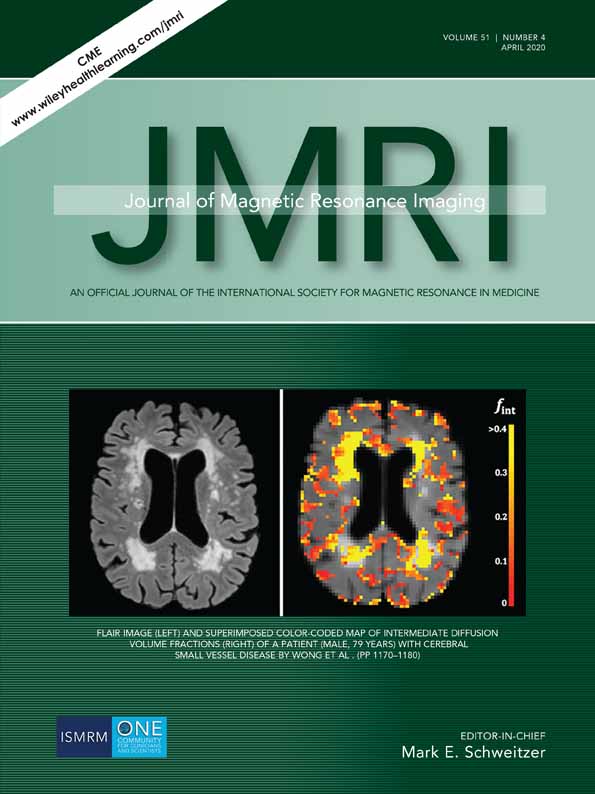Phantom validation of quantitative susceptibility and dynamic contrast-enhanced permeability MR sequences across instruments and sites
Abstract
Background
Quantitative susceptibility mapping (QSM) and dynamic contrast-enhanced quantitative permeability (DCEQP) on magnetic resonance (MR) have been shown to correlate with neurovascular disease progression as markers of vascular leakage and hemosiderin deposition. Applying these techniques as monitoring biomarkers in clinical trials will be necessary; however, their validation across multiple MR platforms and institutions has not been rigorously verified.
Purpose
To validate quantitative measurement of MR biomarkers on multiple instruments at different institutions.
Study Type
Phantom validation between platforms and institutions.
Phantom Model
T1/susceptibility phantom, two-compartment dynamic flow phantom.
Field Strength/Sequence
3T/QSM, T1 mapping, dynamic 2D SPGR.
Assessment
Philips Ingenia, Siemens Prisma, and Siemens Skyra at three different institutions were assessed. A QSM phantom with concentrations of gadolinium, corresponding to magnetic susceptibilities of 0, 0.1, 0.2, 0.4, and 0.8 ppm was assayed. DCEQP was assessed by measuring a MultiHance bolus as the consistency of the width ratio of the curves at the input and outputs over a range of flow ratios between outputs.
Statistical Tests
Each biomarker was assessed by measures of accuracy (Pearson correlation), precision (paired t-test between repeated measurements), and reproducibility (analysis of covariance [ANCOVA] between instruments).
Results
QSM accuracy of r2 > 0.997 on all three platforms was measured. Precision (P = 0.66 Achieva, P = 0.76 Prisma, P = 0.69 Skyra) and reproducibility (P = 0.89) were good. T1 mapping of accuracy was r2 > 0.98. No significant difference between width ratio regression slopes at site 2 (P = 0.669) or site 3 (P = 0.305), and no significant difference between width ratio regression slopes between sites was detected by ANCOVA (P = 0.48).
Data Conclusion
The phantom performed as expected and determined that MR measures of QSM and DCEQP are accurate and consistent across repeated measurements and between platforms.
Level of Evidence: 1
Technical Efficacy Stage: 2
J. Magn. Reson. Imaging 2020;51:1192–1199.
Conflict of Interest
The authors declare no conflicts of interest.




